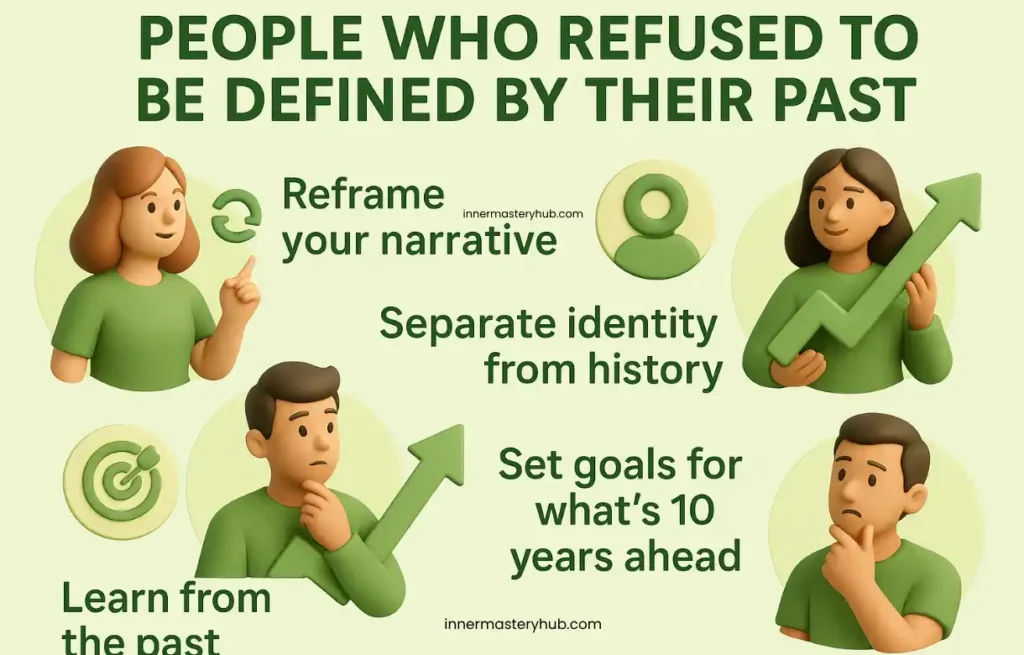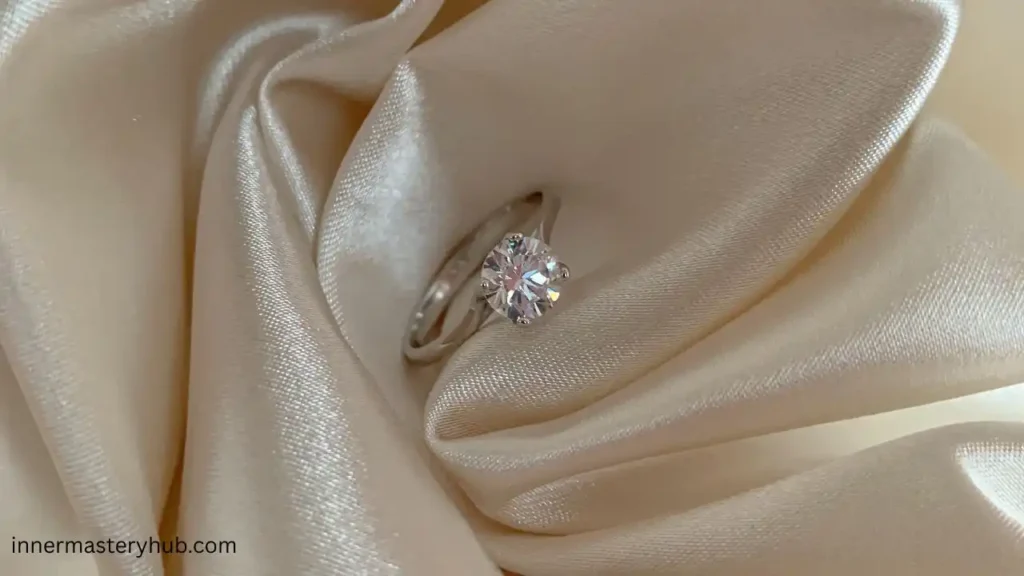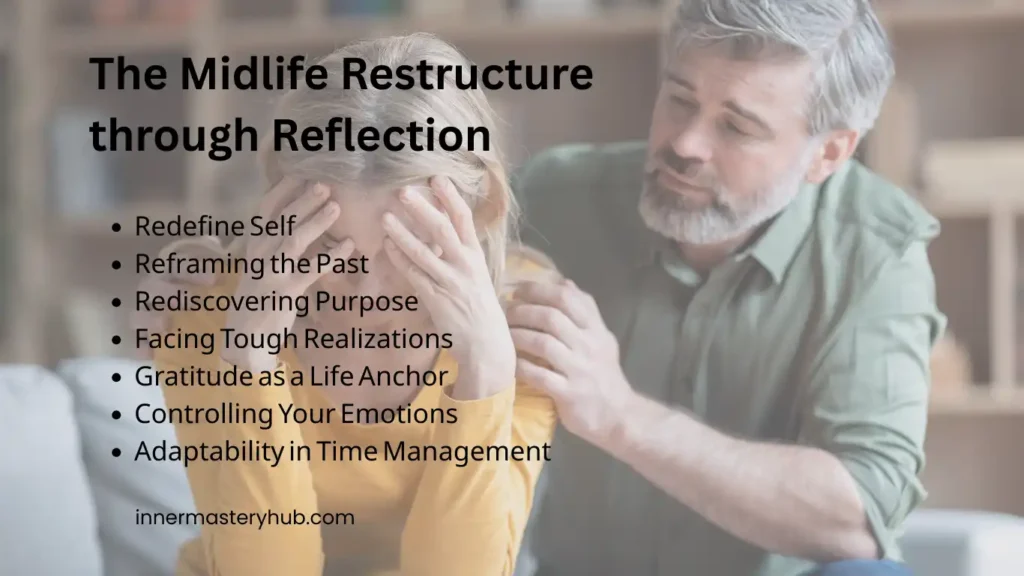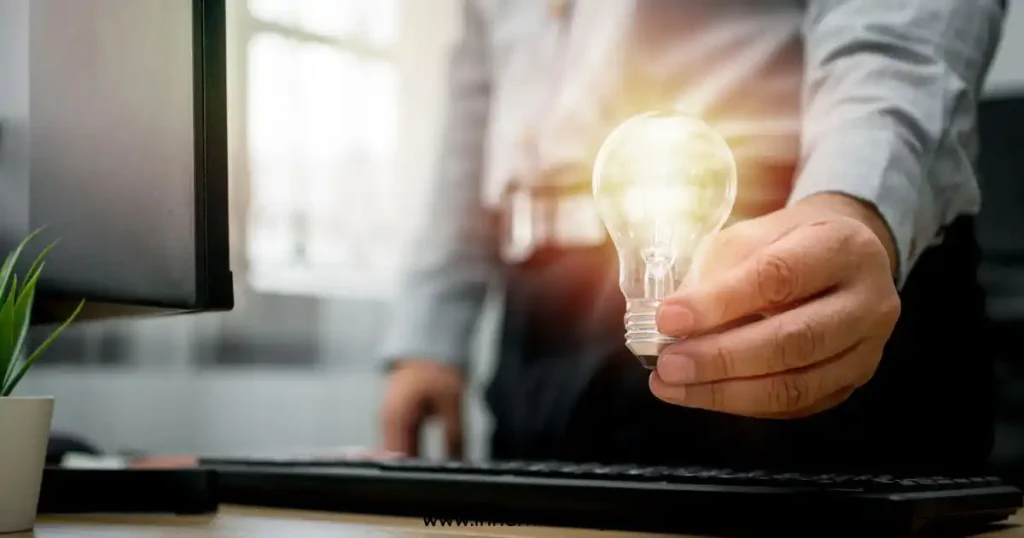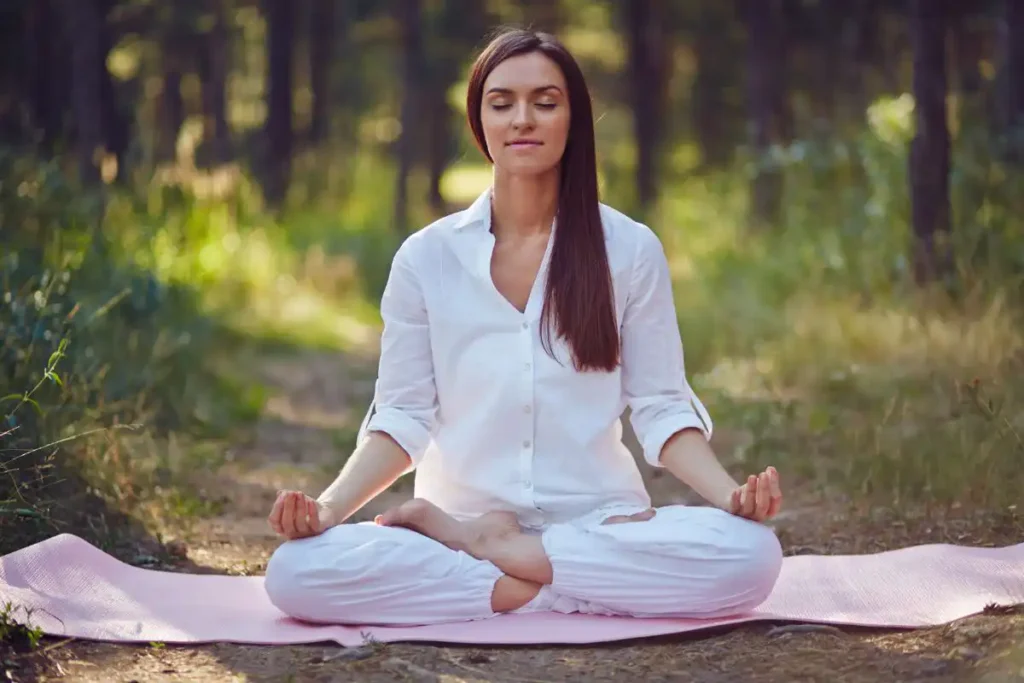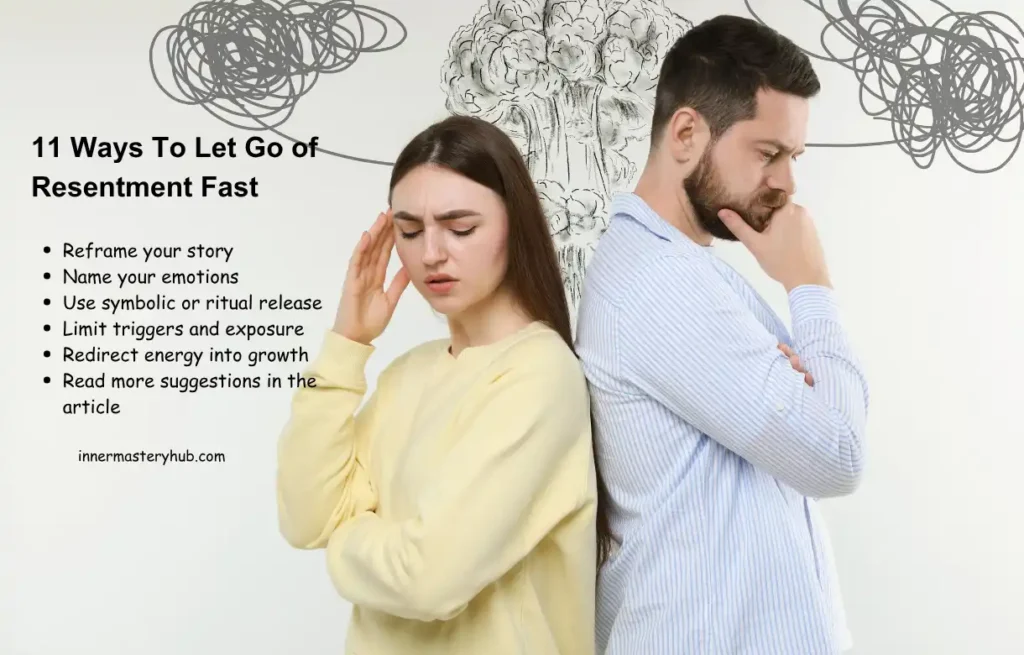21 Ways to Choose the Path of Least Resistance Over Ease
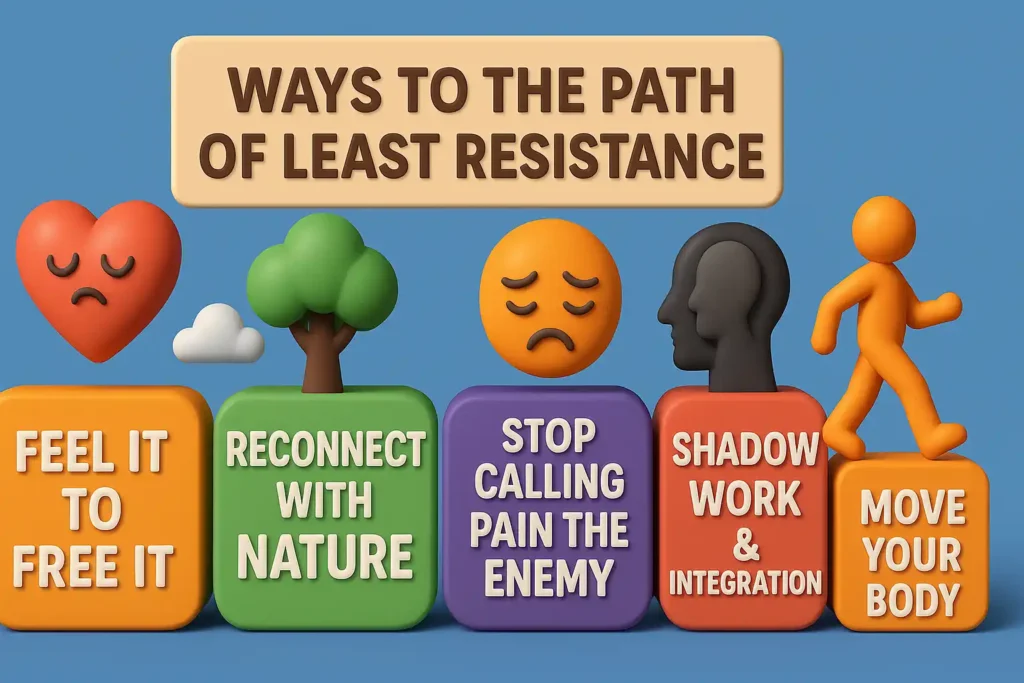
You have likely spent years attempting to manage your feelings, tolerate discomfort, or heal yourself quickly. But everything gets heavier the more you struggle.
Every time you repress your sadness, you may find that it comes back stronger. Happiness always feels fake when you try to force it. This is because of accepting, not Resistance to emotional recovery.
Avoiding obstacles or giving up are not consequences of choosing the Path of Least Resistance. It teaches you to go with life rather than against it. Instead of using force or denial, it is an attitude of emotional harmony, acceptance, and flow.
Why Fighting Yourself Doesn’t Work
Internal tension results from suppressing your feelings; it’s like a tug-of-war between what you wish were and what is. Emotional repression can increase stress, anxiety, and physical symptoms, according to research from the American Psychological Association.
You may believe that emotional self-control keeps you strong. Rather, Resistance traps suffering, to put it briefly. But neuroscientific studies (such as those published in Frontiers in Psychology in 2019) reveal that suppression actually activates the same brain regions linked to chronic stress. In short: resistance traps pain.
Your body stores every emotion you suppress, as do your ideas and vitality. That’s why trying to ignore your feelings causes your shoulders to tighten, your heart to accelerate, and your sleep to fade. You need to move towards gentleness, not struggle, to recover. That’s what it means to walk the Path to Least Resistance.
Choose the Path of Least Resistance Over Ease
Sometimes, ease is an escape from agony, numbness, or distraction.
The Path to Least Resistance, however, is not the same. It’s thoughtful, kind, and truthful. It requires creating a flow without avoiding it.
Acknowledge What You Feel Without Judgment
The first step to healing is honesty. You can’t release what you don’t acknowledge.
Instead of asking, “Why do I feel this way?”, try asking, “What am I feeling right now?”
Label it: anger, grief, fear, shame. When you name it, you separate yourself from it; you become the observer, not the prisoner.
Studies in affect labeling show that naming emotions reduces activity in the amygdala, the brain’s fear center, helping you regulate more calmly (Lieberman et al., Psychological Science).
This is the Path of Least Resistance in action, noticing, not fighting.
You can’t heal what you refuse to feel. That’s not cliché, it’s neuroscience.
Feel It to Free It
Emotions are energy in motion. If you don’t let them move, they stagnate.
The Path to Least Resistance invites you to let emotions flow through you.
Here’s a small reflection practice:
- Sit in a quiet space.
- Place a hand on your chest.
- Ask yourself, “What does this feeling want to tell me?”
- Listen — not with your mind, but your body.
You may feel a wave of sadness or warmth. That’s release, not breakdown.
Breathe Into Emotional Discomfort
Your breath shortens as pain hits. That means your neurological system is in danger.
You can change that rhythm by deliberately slowing your breathing.
Try this: take a shallow breath for four counts, hold it for two, and then release it for six. Continue until your heartbeat becomes softer.
Your body’s “rest and repair” Mode—the parasympathetic nervous system—is triggered by deep breathing (Harvard Health, 2022).
You must breathe through your suffering rather than try to avoid it.
Somatic Experiencing / Body-Centered Awareness
The trauma-informed technique known as Somatic Experiencing (SE) stresses physical sensations rather than just ideas or feelings. Your body’s “stuckness” or tense spots are gently tracked and allowed to dissolve gradually. Wikipedia
Why does the Path of Least Resistance make sense for it?
Because it does not require mental awareness before working from the body upward, in tiny, gradual steps, you allow your internal system to self-correct.
How to try it (for you): Pay attention to the area (chest, abdomen, limbs) where you have discomfort. Don’t fix or explain right away; see common sense. Follow a tiny breath or action that allows softening. Follow your body’s lead.
Emotional Freedom Techniques (EFT) / Tapping
EFT combines light tapping on acupuncture or acupressure points with cognitive awareness. Benefits for emotional distress, PTSD, and anxiety have been demonstrated in more than 100 trials. PMC
Why the Path of Least Resistance is appropriate for it:
Instead of using force, it makes use of gentle touch and body energy pathways. You acknowledge, release, and tap. It is easy to use and mild.
Select a feeling that you are experiencing. Please rate it on a scale of 0 to 10. Say something like this while tapping certain areas, such as the side of your hand, your eyebrow, or your undereye.
“Despite this sadness, I fully and utterly accept who I am.”
Re-rate after a round. Intensity tends to decrease.
Inner Relationship Focusing / Parts Dialoguing
Ann Weiser Cornell developed the Inner Relationship Focusing technique, which encourages you to relate to your inner parts—the shameful, the angry, and the fearful—with curiosity and presence.
Why does it align with the Path of Least Resistance? As you make friends with parts rather than repressing them. You softly lean in towards them rather than pushing them away.
To give it a try, close your eyes and ask an inner voice to speak. Maybe your “inner critic” or “anxious self.” “What would you like me to know?” Listen without passing judgment. Show compassion by saying, “Thank you for speaking. I see you. Tension around that section eventually goes away.
Reconnect with Nature / Nature Therapy
It is well recognised that spending time in natural environments—such as parks, forests, or by water—can lower cortisol levels, elevate mood, and promote emotional release.
Nature flows naturally, which is why it fits the Path of Least Resistance. You can’t force healing in nature since it naturally promotes serenity. Your internal flow is supported by something bigger that you align with.
How to do it (for you): Take even fifteen minutes to relax in a park, garden, or by the lake. Take it easy, observe the sky, trees, and the wind on your skin. Allow your breathing to follow the natural rhythm. Stay with it if an emotional release occurs.
Journal to Create Emotional Flow
Words can help remove the clutter in your head.
Because it transforms chaos into clarity, journaling is one of the best ways to release emotions.
In just three sessions, expressive writing can lower stress and raise self-awareness, according to a 2018 study published in JMIR Mental Health.
Don’t change your writing. Don’t stress over syntax or organisation. Allow your keyboard or pen to become the voice your heart has never been allowed to use.
Your emotions stop repressing and begin to flow as a result of this process.
Stop Calling Pain the Enemy
Pain on an emotional level is data, not punishment.
It lets you know what needs love, care, or adjustment.
Pain is resisted when it is perceived as an enemy. However, you become softer when you perceive it as a messenger.
According to post-traumatic growth research, overcoming emotional anguish frequently results in greater strength, compassion, and significance (Tedeschi & Calhoun, APA, 2004).
Try expressing, “I’m learning from this,” rather than, “I hate feeling this way.”
That small change opens the path to freedom.
Radical Self-Compassion
Being kind to oneself is a sign of wisdom, not weakness.
According to Kristin Neff’s self-compassion research at the University of Texas, those who treat themselves with kindness exhibit more resilience and recover from emotional pain more quickly.
Talk to yourself the same way you would a loved one when you trip, weep, or are immobile.
Healing Isn’t a Solo Journey
You don’t have to heal on your own.
Your nervous system feels safer when you have the support of a friend, therapist, or support group. Safety is the cornerstone of emotional release.
Connection is ingrained in human nature. A study in Social Cognitive and Affective Neuroscience actually demonstrates that sharing emotions lessens the severity of distress.
Allow people to make room for you. That is also a type of strength that does not require Resistance.

Move your body — Energy Must Flow
What your mind avoids, your body stores.
The imprisoned energy can be released with gentle movement, such as yoga, dancing, stretching, or even strolling.
Physical movement helps release trauma-related emotional charge, according to somatic therapists (Levine, Somatic Experiencing, 1997).
Imagine that when you move, you are actually removing Resistance.
Resistant to being willing; grace is not necessary.
Release Control and Trust the Process
Although control seems secure, it frequently stands in the way of healing.
There will only be Resistance.
The Path to Least Resistance calls for submission, believing that healing will occur according to God’s timeline rather than your own.
Give up the urge to “be okay” at this moment.
Silently, at moments you aren’t even aware of, progress is made.
Shift from Ease to Flow
Sometimes ease translates into avoidance, favouring comfort above development.
However, flow entails alignment —selecting your energy’s most organic flow.
Following the Path of Least Resistance involves doing what is true rather than what is convenient.
“Is this decision keeping me trapped in avoidance, or is it helping me stay in flow?”
You’re headed in the right direction when your activities feel honest, calm, and grounded.
Create Gentle Daily Rituals That Support Emotional Ease
Your healing doesn’t happen in grand gestures — it lives in daily habits.
Create small rituals that anchor you in flow:
- Morning silence before screens
- Gratitude journaling
- Listening to calm music
- Evening walks or meditation
According to Harvard Health Publishing, consistent self-care rituals lower cortisol and help regulate mood.
The more you create rhythm, the less you resist.
Shadow Work & Integration
Bring your hidden or ignored feelings—such as guilt, fear, or injured areas—to light. You can reduce inner Resistance with shadow work.
Resistance is cited as a releasing technique in numerous prestigious studies on emotional healing.
The inner walls are softened by integrating concealed components.
Use Energy-Healing Tools Like EFT / Tapping
Acupressure points are stimulated through EFT (Emotional Freedom Techniques), also known as “tapping,” which acknowledges emotions. It’s characterised as a method for relieving emotional distress and balancing energy.
Keep Track of and Gently Examine Your Default Routes
Watch out for emotional shortcuts, such as numbness, distraction, or avoidance. Is this a good path for me, or is it just consoling right now?
This knowledge enables you to discern between the “path to least resistance” and the “path of avoidance.”
“Riverbed” Restructure Your Life (Modify Underlying Patterns)
Our “riverbed” defines the way emotions flow, and our life structure dictates our default flows, as one Medium piece explains. The middle
It is therefore easier (with less friction) to release emotions healthily when routines, boundaries, and surroundings are adjusted.
Use Micro-Habits to Bypass Resistance
Small actions lower the entry barrier. One line of journaling, 30 seconds of mindful breathing, or getting up and stretching are a few examples. Humans are “hard-wired to follow the path of least resistance,” which means that your brain is predisposed to favour simpler ways.
These tiny actions add up over time, creating momentum for emotional release.
Morita Therapy
Morita therapy, which originated in Japan, encourages activity in day-to-day life even when suffering persists and teaches acceptance of thoughts and feelings without attempting to eliminate them.
The reason it aligns with the Path of Least Resistance,
It does not seek ease, which might be interpreted as avoidance. It teaches you to choose actions based on your values, even when you can’t change them. A resistance-light strategy is what that is.
Despite turbulent emotions, choose a little action that aligns with your objectives (e.g., write, assist someone, or take a stroll). Acknowledge that you are uncomfortable. Still, do it. You gradually get the confidence to navigate life with your feelings without waiting for them to be “perfect.”
Self-Reflection — How You Can Practice This Now
Pause.
Think of one emotion you’ve been resisting lately. Maybe it’s grief from loss, or frustration from unmet expectations.
Now, breathe. Say quietly:
“I don’t have to fight this. I can feel it and still be safe.”
This moment — this allowing — is the Path to Least Resistance in motion.
Every time you soften instead of push, you’re teaching your nervous system that peace doesn’t come from control — it comes from trust.
The Bigger Picture — The Science of Flow and Healing
The term “flow” was coined by psychologist Mihaly Csikszentmihalyi to describe a state of mind in which one is completely focused, in the moment, and in harmony. Resistance vanishes with flow.
Your mind remains in “fight or flight” Mode when you are constantly up against Resistance. Resistance in your brain releases dopamine and serotonin, which are linked to happiness and relaxation.
This is supported by neuroscience research showing that acceptance-based practices, mindfulness, and compassion decrease limbic overactivation (stress) and activate the prefrontal cortex (thinking and balance).
To put it another way, peace is biological. You were made for it.
The Truth About Healing
Life does not become easy just because you choose the path of least Resistance. Resistance to face your feelings fearlessly. You begin surfing waves instead of resisting them.
It feels like submission at times and strength at others. However, it always feels authentic.
Temporary comfort is ease.
Freedom, over the long term, is the Path of Least Resistance.
Conclusion — Flow, Don’t Force
Walk the Path to Least Resistance
Recognising feelings and going through pain, to having faith in the process, and showing empathy.
Instead of moving against life, each one encourages you to go with it.
Emotional suffering does not indicate weakness. The body uses it to request release.
You cease suffering twice when you stop fighting your feelings and stop opposing what you feel.
So take a breath.
Relax.
Let’s.
Give yourself over to life.
Healing is a flow to enter rather than a battle to win.
FAQs about Path to Least Resistance
What does “Path to Least Resistance” mean?
It involves choosing the path of least Resistance, or the one with the fewest internal or external barriers; this concept, which originated in physics, is now applied to behaviour and decision-making.
Is the Path to Least Resistance good or bad?
When it facilitates the flow of values-aligned goals, it is beneficial; when it turns into avoidance or procrastination, it is detrimental.
Where did the phrase come from?
Metaphors describing energy or current following simpler paths originated in physics and electronics and were later applied to human behaviour.
How do I use the Path of Least Resistance in my life?
Create an environment where doing the “right” thing is simple (one-click prep, friction-free routines, default calendar blocks).
Can mindfulness/acceptance make this path healthier?
Indeed. According to ACT and MBSR research, acceptance and mindfulness promote flexible coping and lessen emotional reactivity.
How does this help emotional healing?
Regulating and releasing emotions is supported by allowing them (rather than repressing them) and by using gentle techniques (breathwork, body awareness).
What are examples at work?
Make desired work the default by batching jobs, streamlining decisions, eliminating handoffs, and automating activities.
When should I avoid the Path to Least Resistance?
If instanceseps you in temporary comfort zones, avoids difficult but essential conversations, or goes against your principles.
Is there research backing this approach of the path of least Resistance?
Studies show that mindfulness and acceptance are beneficial for self-control and well-being; people tend to favour low-effort solutions. Take advantage of this bias to create healthier routines.

